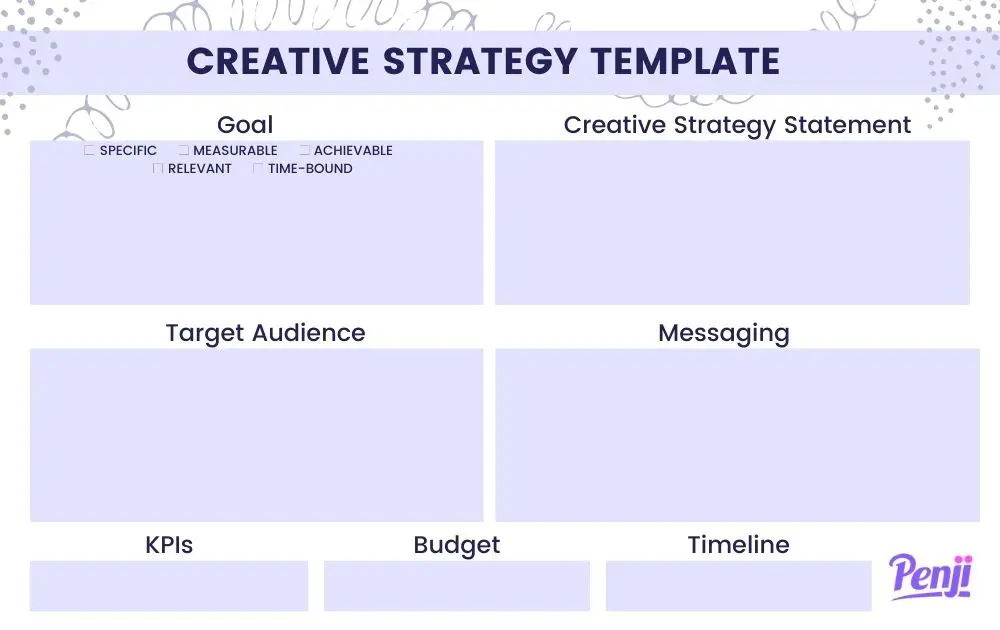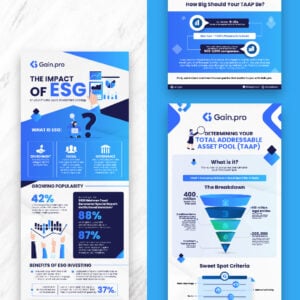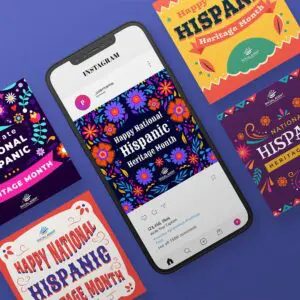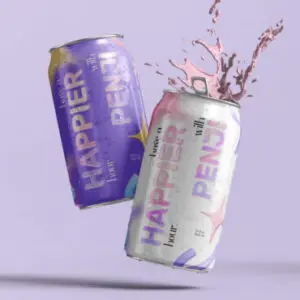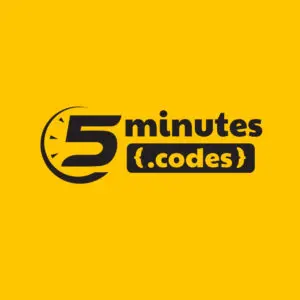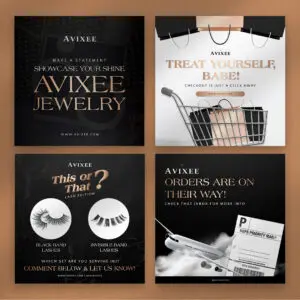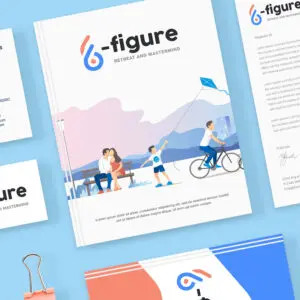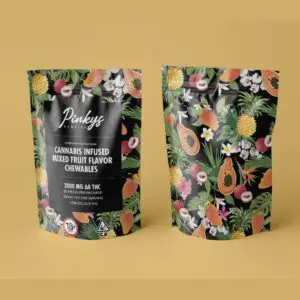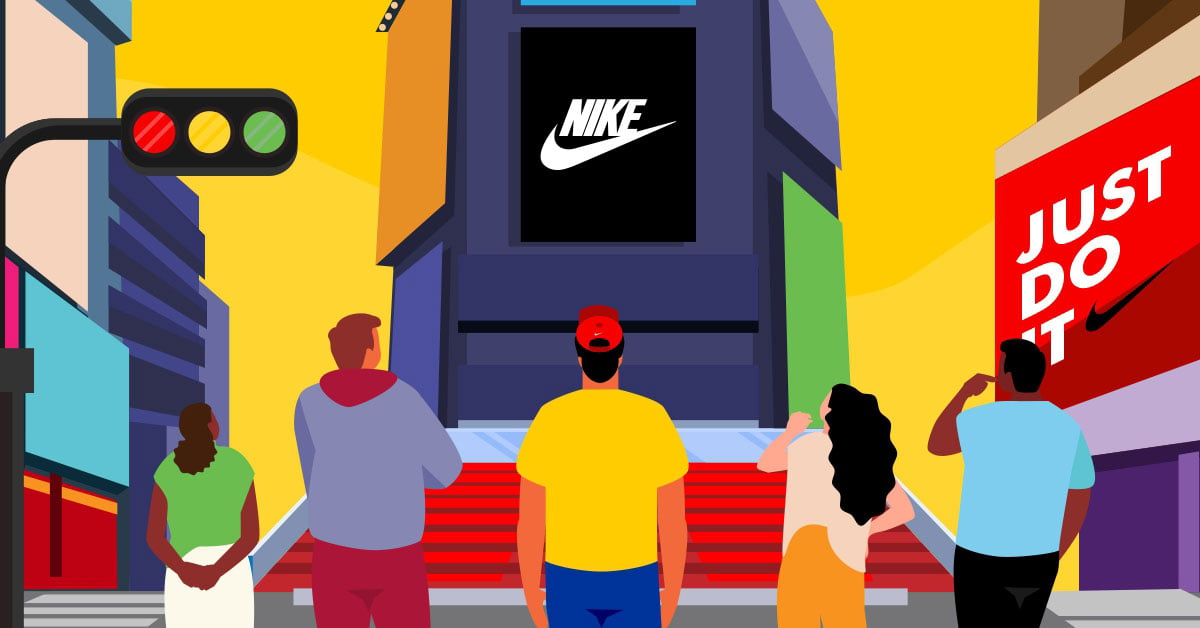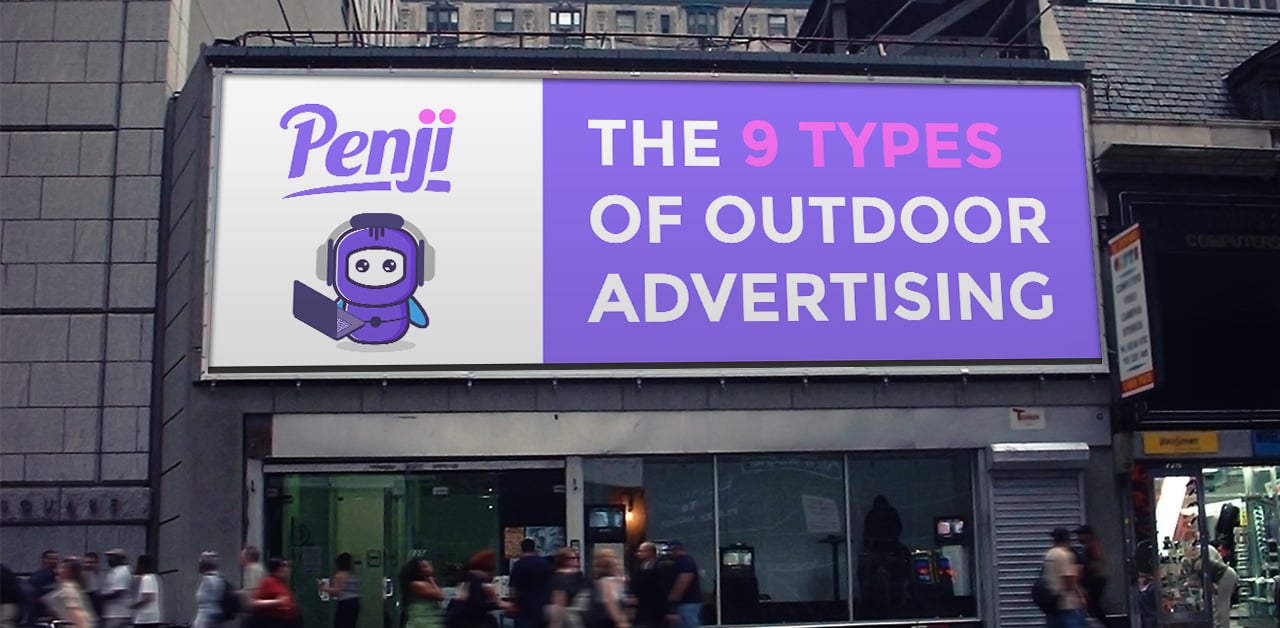Picture this: you have a fantastic product or service ready to hit the market. You’ve done your research, identified your target audience, and have a killer marketing plan in place. But there’s something missing – that spark, that magic ingredient that elevates your campaign from merely good to utterly unforgettable.
Enter: your creative strategy.

What is a creative strategy in communication?
At the most basic, creative strategy pertains to a company’s plan of action to achieve its business goals and objectives.
That said, the creative strategy should be an intentional blueprint to foster long-term business growth. Building the strategy involves:
- Knowing your target audience
- Defining what actions you want them to take, and
- Outlining your timeline and success metrics
Creative strategy is the best way to ensure your product aligns with your expectations. The creative strategy statement serves two essential functions. Firstly, it provides you with a clear direction for how to move forward with a project. Secondly, it helps them understand who they are creating deliverables for, ensuring they target the right audience.
Why is creative strategy important?
A creative strategy gives a company a consistent and razor-sharp focus in its marketing efforts.
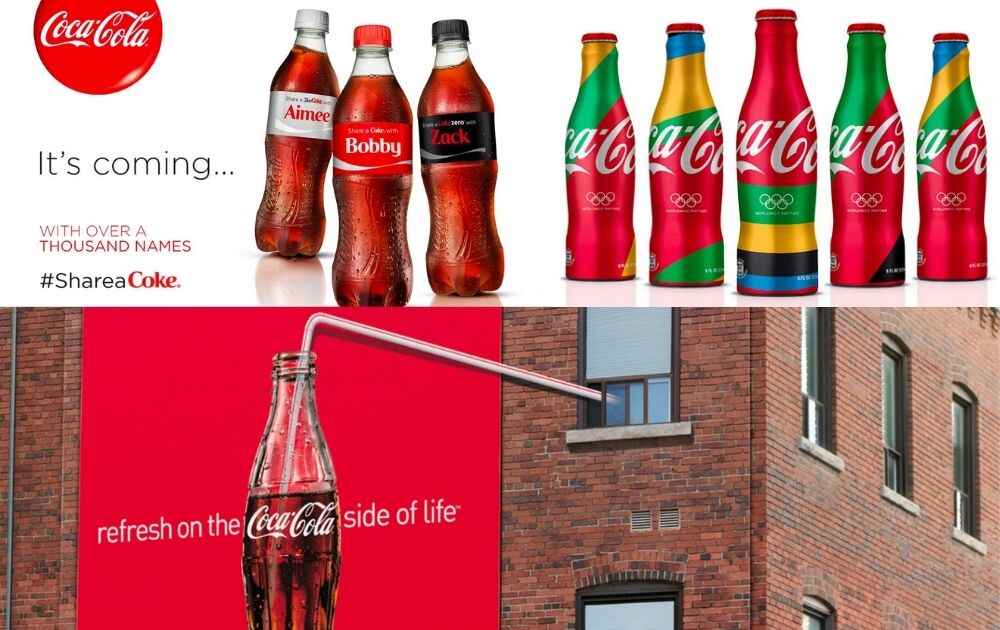
To understand the importance of creative strategy, let’s look at one of the most famous brands worldwide – Coca-Cola. The company has maintained a solid brand identity through the years, centered around enjoying the moment of consuming a Coke. In fact, its recent slogans throughout the years reflect this identity. “Taste the Feeling,” “Together Tastes Better,” and “Real Magic” are just among the most recent examples. Coke’s consistent branding also reflects in its campaign narratives, product packaging design, and even sponsorships.
Because of its solid branding and creative strategy, surveys show that 94% of the world’s population recognizes Coca-Cola’s red-and-white logo, making it one of the most recognized brands worldwide.
What are the elements of a creative strategy?
Becoming one of the world’s most famous brands might seem like a long shot, but having the same focused marketing efforts to thrive in your industry is never a bad idea.
To create a solid creative strategy, here are seven elements you need to define for your brand:
1. Goal
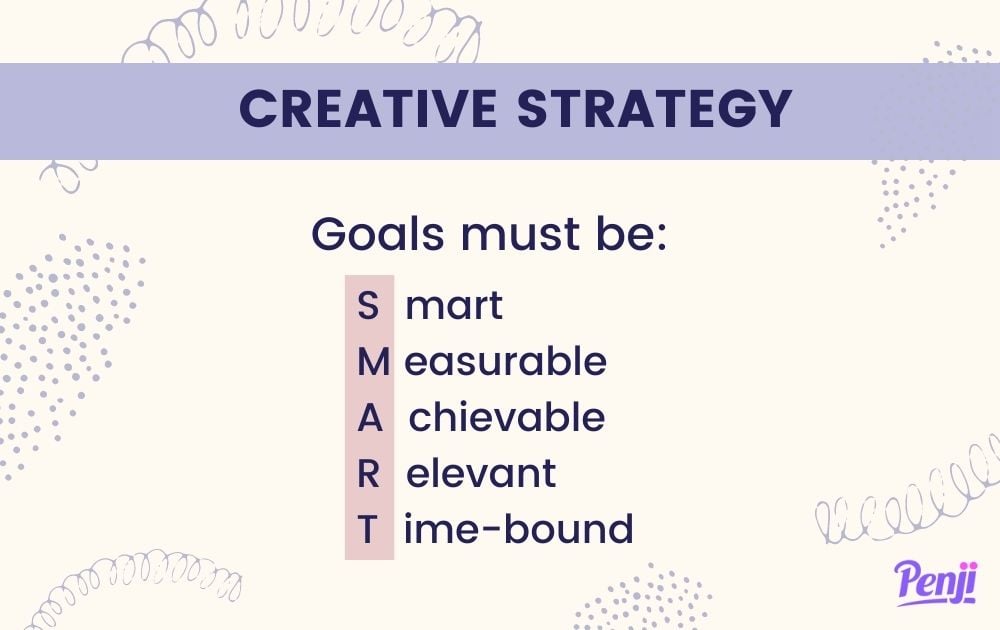
The first step to getting where you want to be is to know where that is in the first place.
Is it to increase your social media engagement? Or is it to collect more leads? To make your goal statement clear and accurate, make it a SMART, which stands for:
- Specific. Clearly define what you want to achieve. For example, “increase brand awareness” is too general, while “increase brand awareness by 20% among our target audience of women aged 25-34 in the next six months” is specific.
- Measurable. Determine how you will measure success. In the example above, you would measure success by tracking brand awareness through surveys or social media analytics.
- Achievable. Your goal should be realistic. Set a goal that challenges your team but is not impossible to achieve.
- Relevant. Ensure your goal aligns with your overall business objectives and is relevant to your target audience.
- Time-Bound. Set a deadline for achieving your goal. After all, a goal without a timeline is just a wish.
Goal Example: To increase ecommerce sales by 10% in the next three months.
2. Creative Strategy Statement
The creative strategy statement is the overall strategy that will guide the creative execution of the campaign.
This statement may include the tone, style, and visual elements that will be used to communicate the key message to the target audience. Aside from tone of voice, you may also include visual guides for branding mockups and other materials here. A good creative strategy statement can dramatically elevate your brand’s overall look when paired with strong copy and a professional graphic design service.
Your creative strategy statement doesn’t have to be the same for each campaign, but it would be best if they’re consistent with one another, just like our example with Coca-Cola.
Creative Strategy Statement Example: The campaign will use bright, vibrant visuals and a friendly, approachable tone to communicate our key messaging to the target audience. We will highlight natural ingredients and sustainable packaging in our marketing materials.
3. Key Performance Indicators (KPIs)
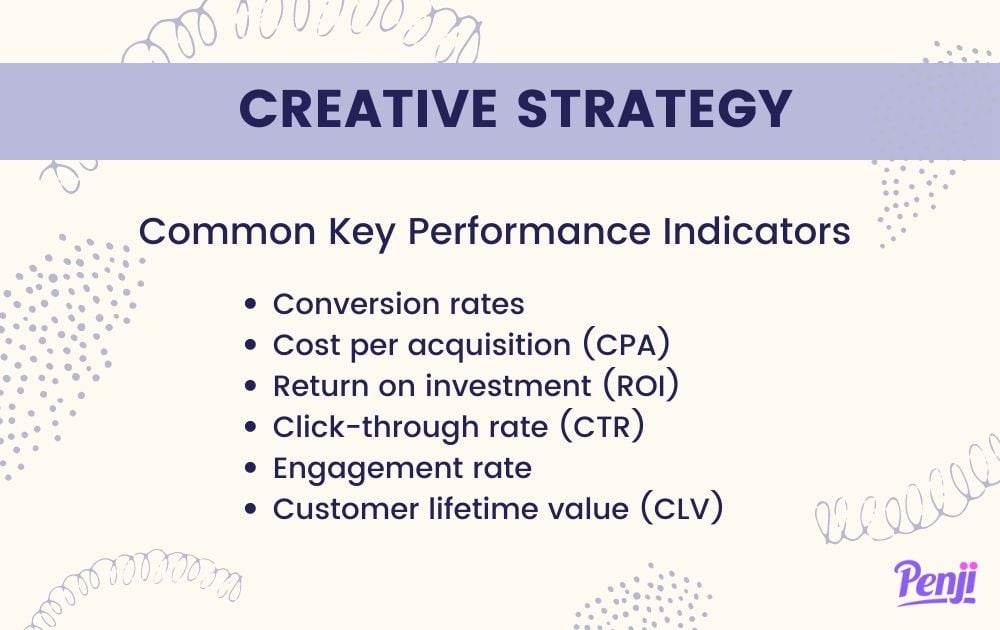
Key performance indicators, or KPIs, are measurable metrics used to evaluate the effectiveness of marketing strategies and campaigns. KPIs are used to measure progress toward marketing goals and objectives and track marketing efforts’ success over time.
Some examples of KPIs are:
- Conversion rates: the percentage of website visitors who take a desired action, such as making a purchase or filling out a form.
- Cost per acquisition (CPA): the cost of acquiring a new customer or lead.
- Return on investment (ROI): the amount of revenue generated by a marketing campaign relative to the amount spent on that campaign.
- Click-through rate (CTR): the percentage of people who click on a link in a marketing email or advertisement.
- Engagement rate: the percentage of people who engage with a marketing campaign, such as liking or sharing a social media post.
- Customer lifetime value (CLV): the total value a customer will bring to a business over the course of their relationship.
KPIs Example: We’ll measure the click-through rate of blog posts on the website as well as the engagement rate via Facebook’s likes, shares, and comments.
4. Target Audience
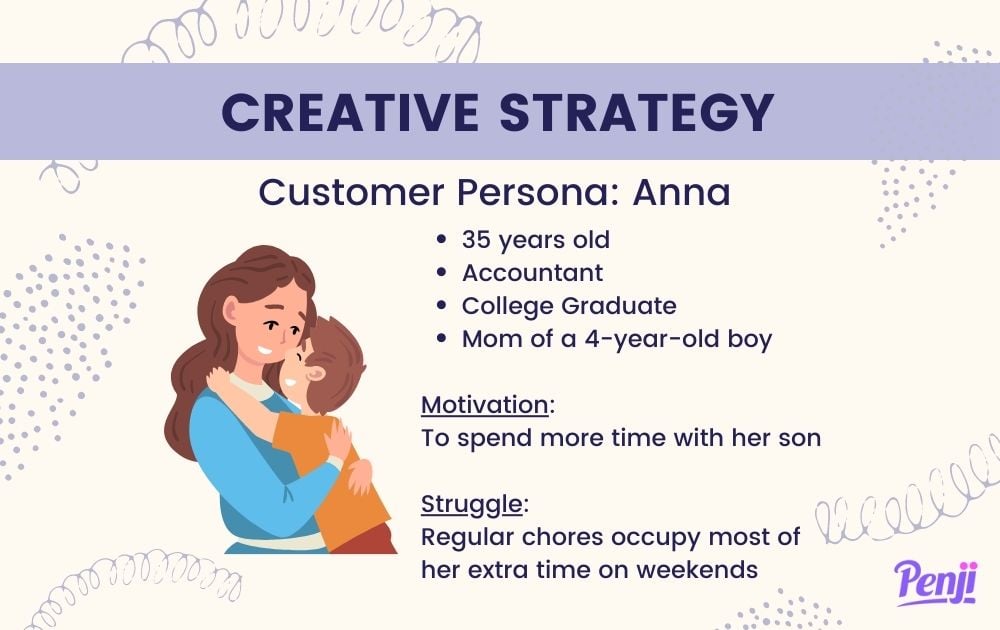
Before creating a message that resonates with your audience, you must understand who they are.
Define your target audience by demographic information, psychographics, behaviors, and interests. After identifying this basic information, you can create buyer personas or the personas representing the ideal customer. This involves creating a fictional profile of your ideal customer based on their:
- Needs
- Motivations
- Pain points
- Buying behaviors
Target Audience Example: Our target audience is single parents aged 30 to 45 with one to two children below 12 years old who get basic groceries delivered to their homes weekly.
Get your creative strategy handled for you
Try Penji risk-free for 30 days and get all the custom graphics you need
5. Messaging
The message, or messaging strategy, is a critical component of the creative strategy and should be included in the statement.
To craft your message, you must define your value proposition: What is the primary benefit that your product or service provides? This should be a single, clear statement that captures the essence of what you are offering.
Message Example: With our grocery delivery subscription, you wouldn’t have to take a trip to the store every week, and you could spend more quality time with your kids.
6. Budget
Estimate the cost of each resource based on market rates, quotes from vendors, or internal costs. It is essential to be as accurate as possible when estimating costs to ensure the budget is realistic and achievable.
Budget Example: $500–1,000k for professional graphic design, paid to advertise, and video production.
7. Timeline
Start by defining the key milestones of the project. These milestones should be specific and measurable and should relate to the overall objectives of the project. Then, estimate the amount of time required to complete each milestone to determine the project’s overall timeline.
Timeline Example: Four months of implementation and two months more to evaluate performance.
Ready to build your very own creative strategy? Here’s a free image template you can print to use as you brainstorm for your marketing blueprint:
